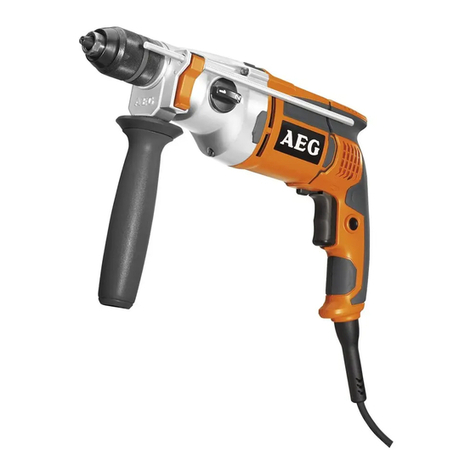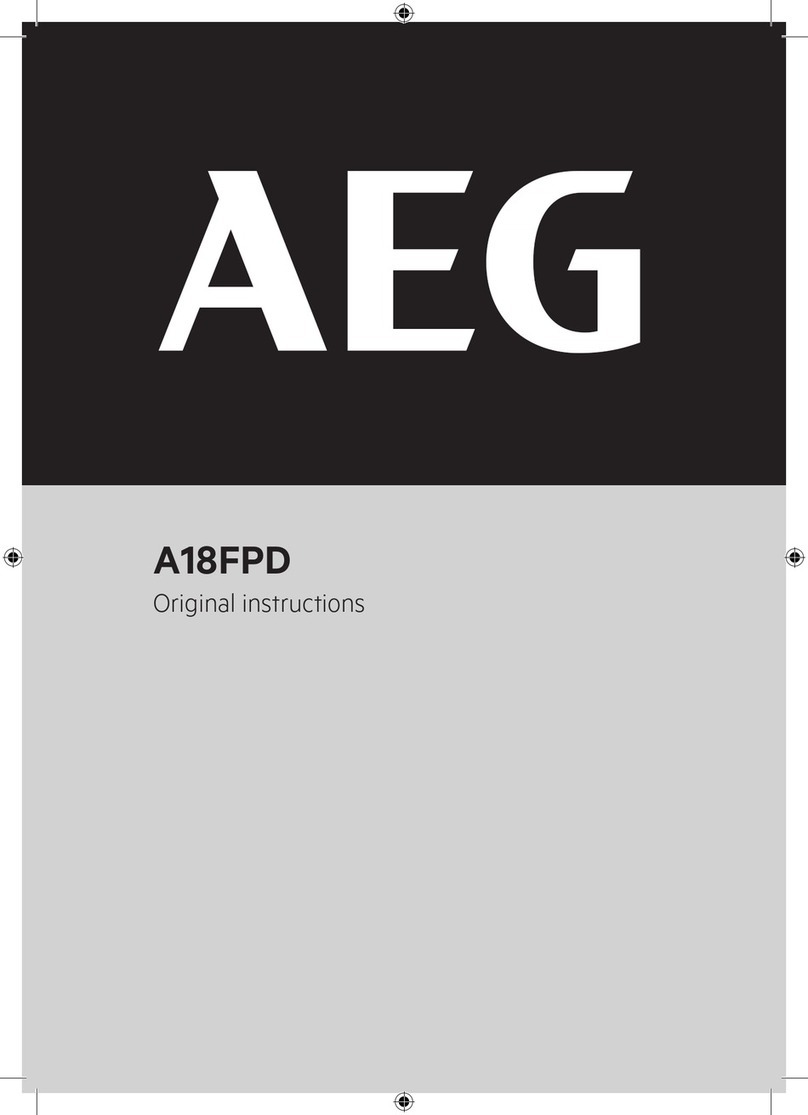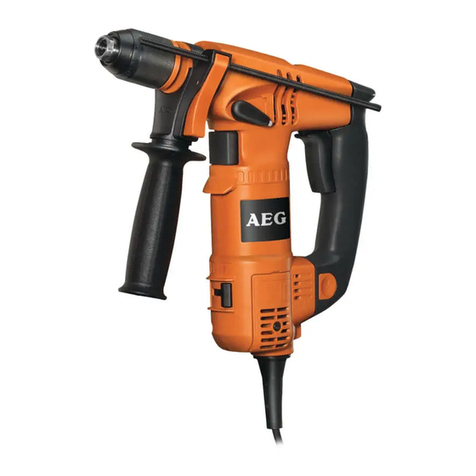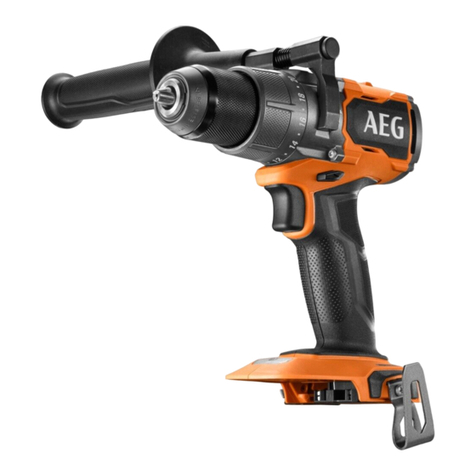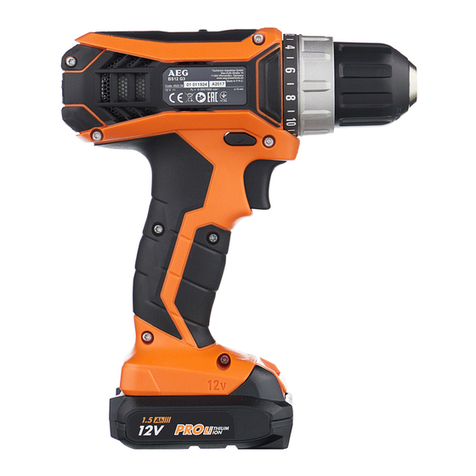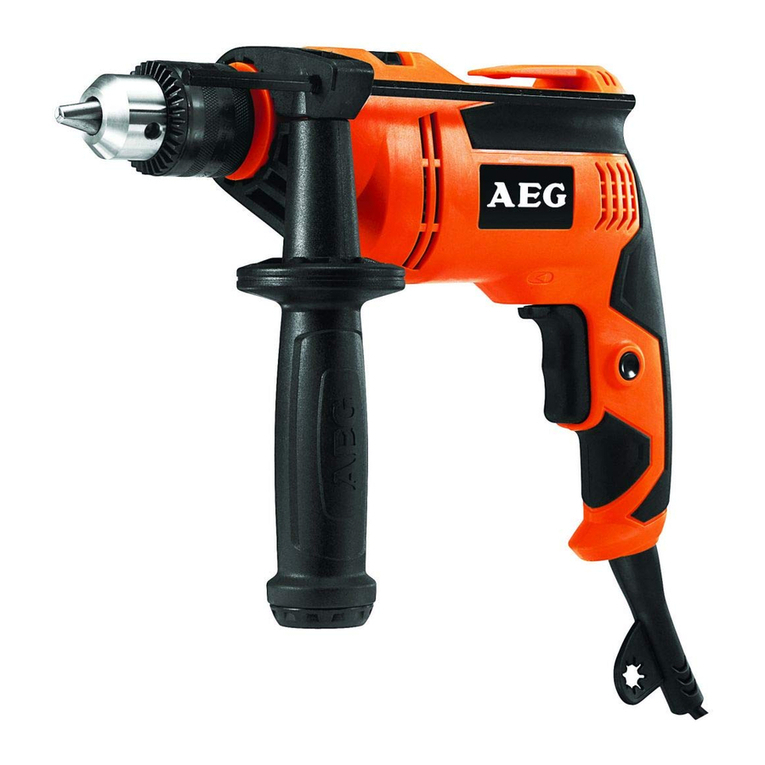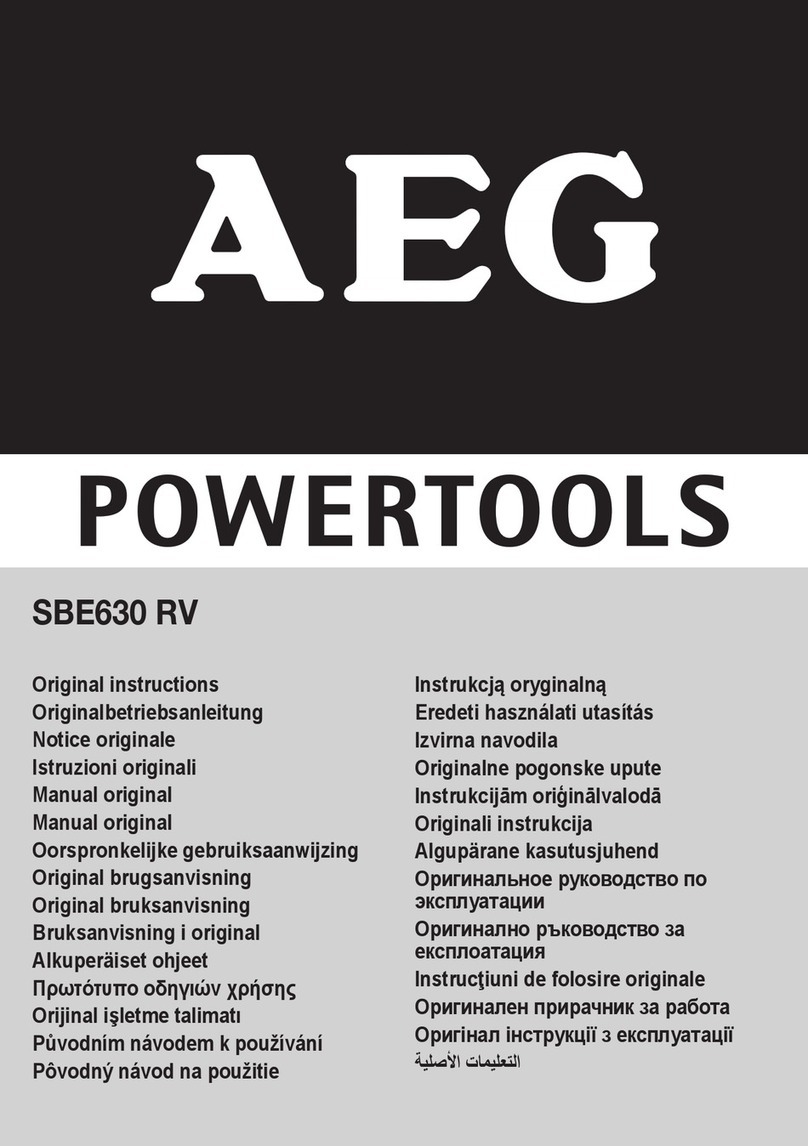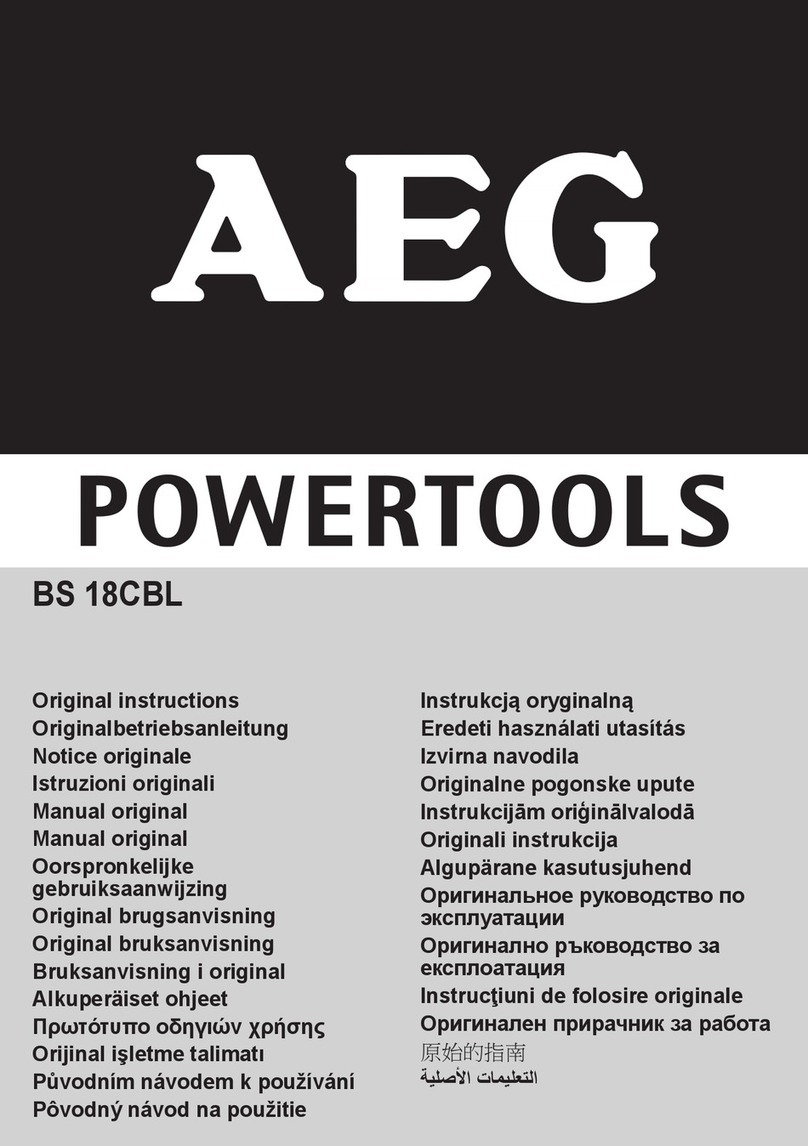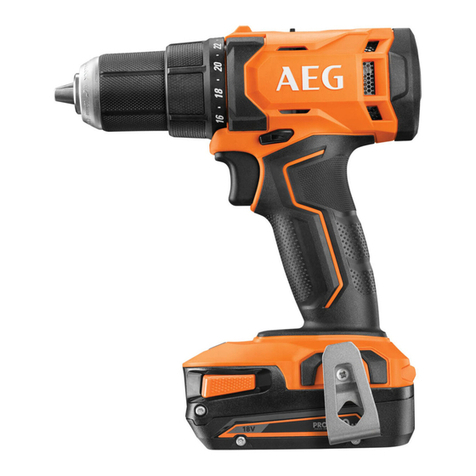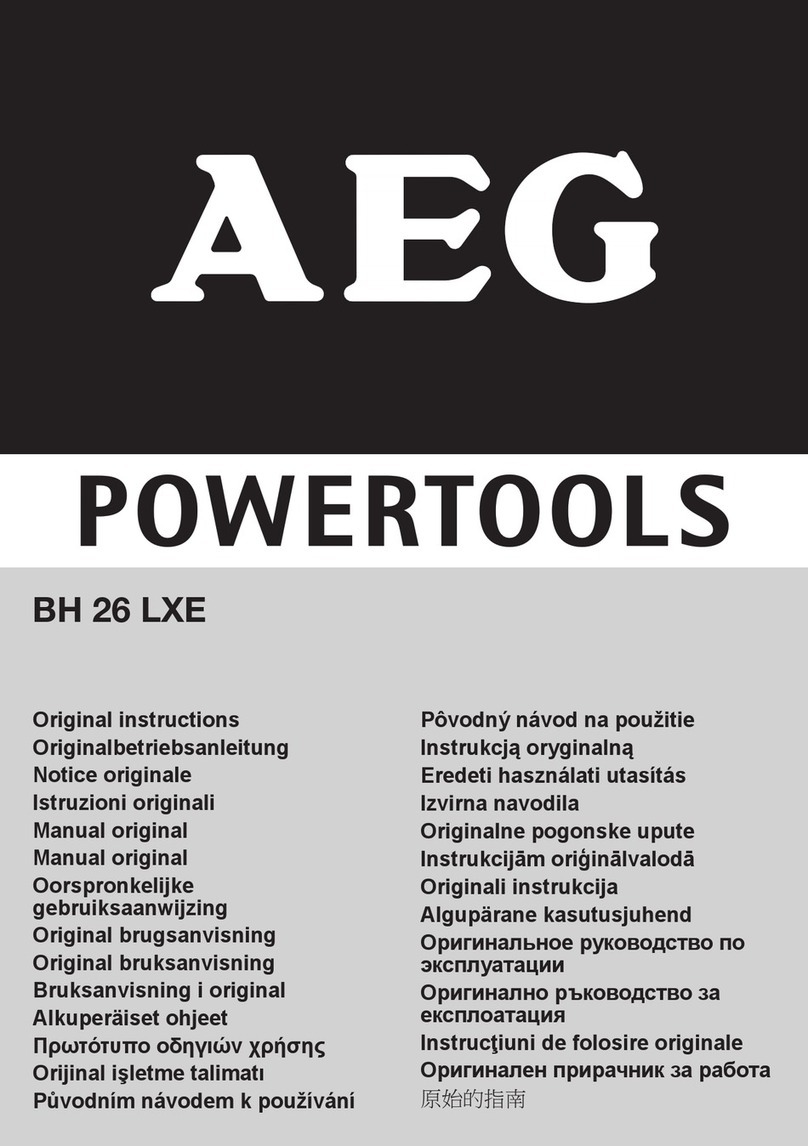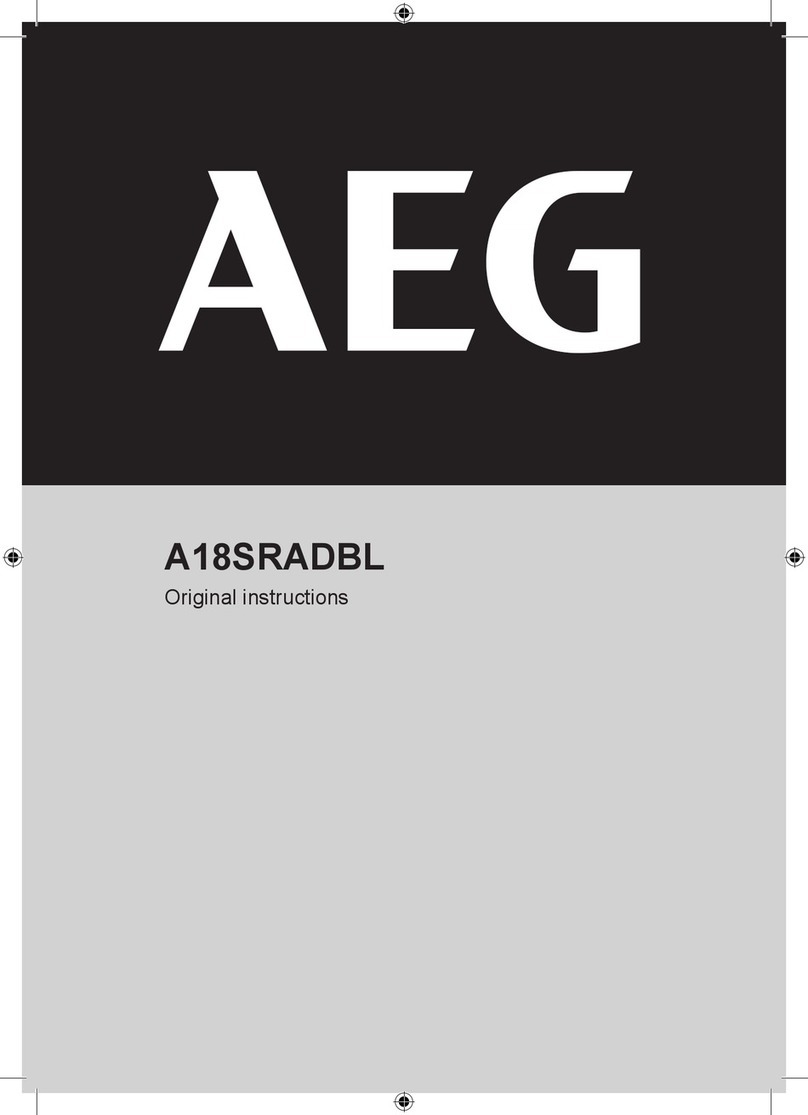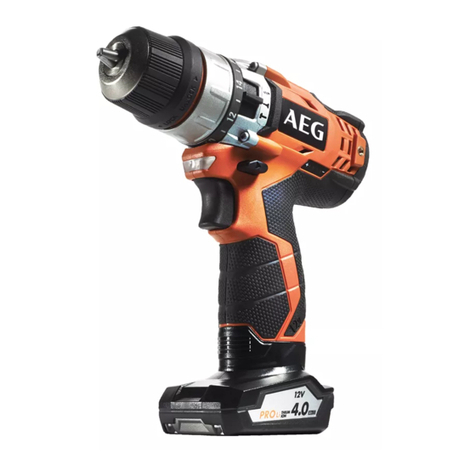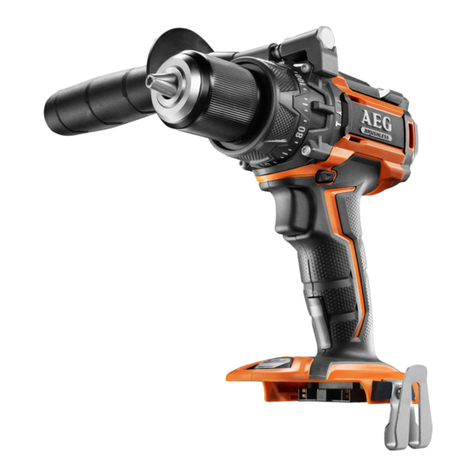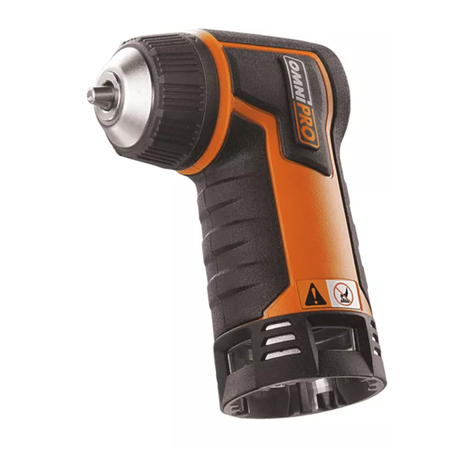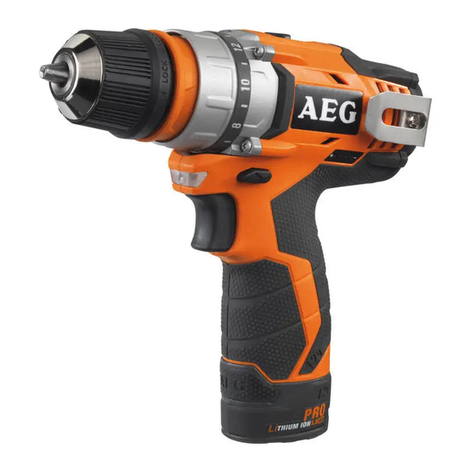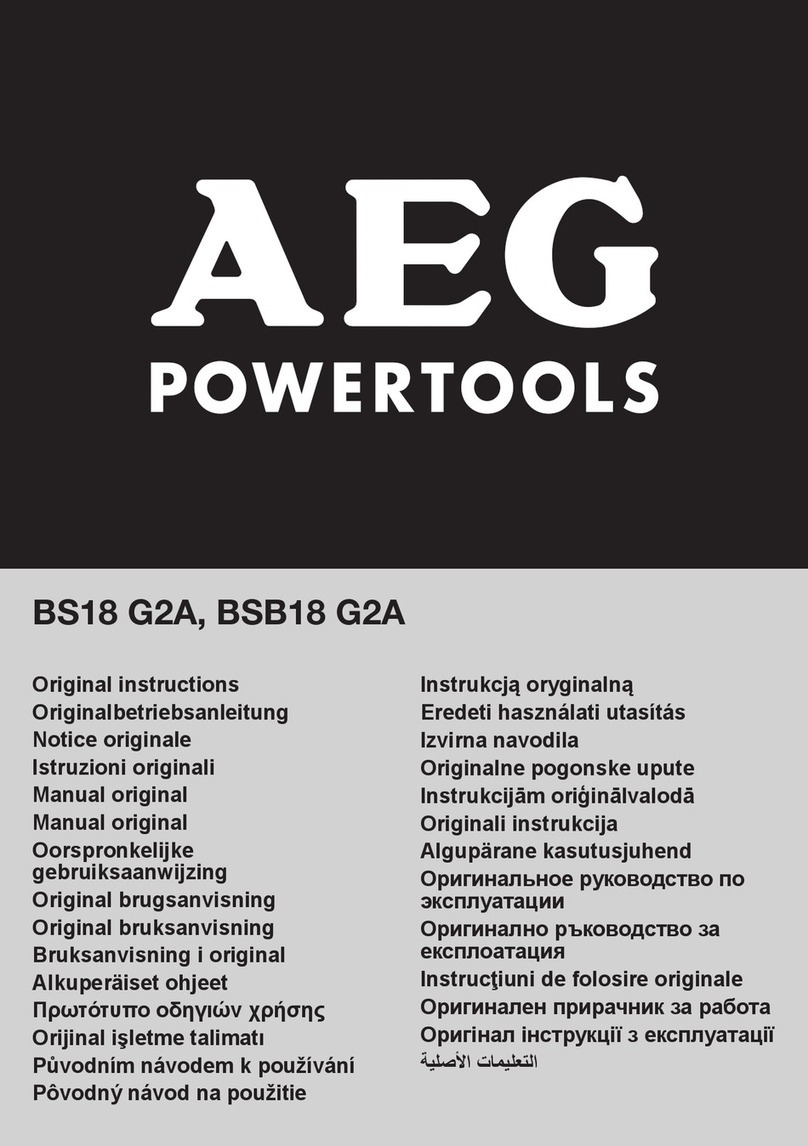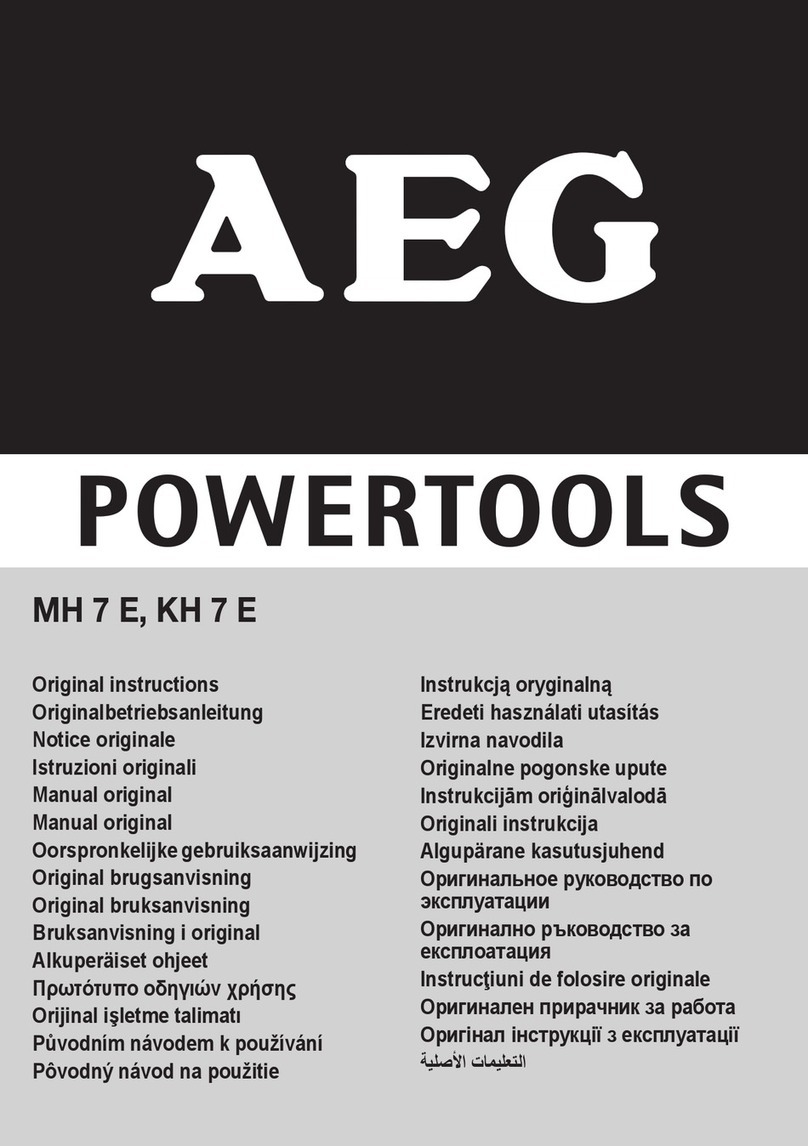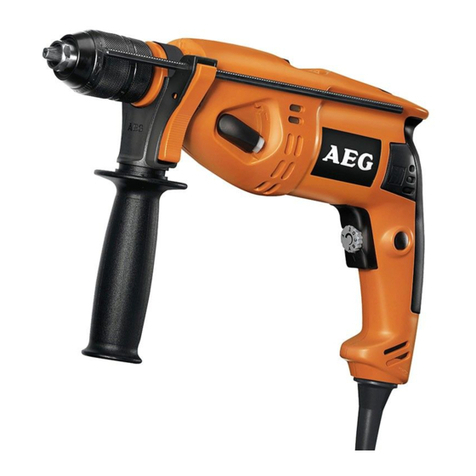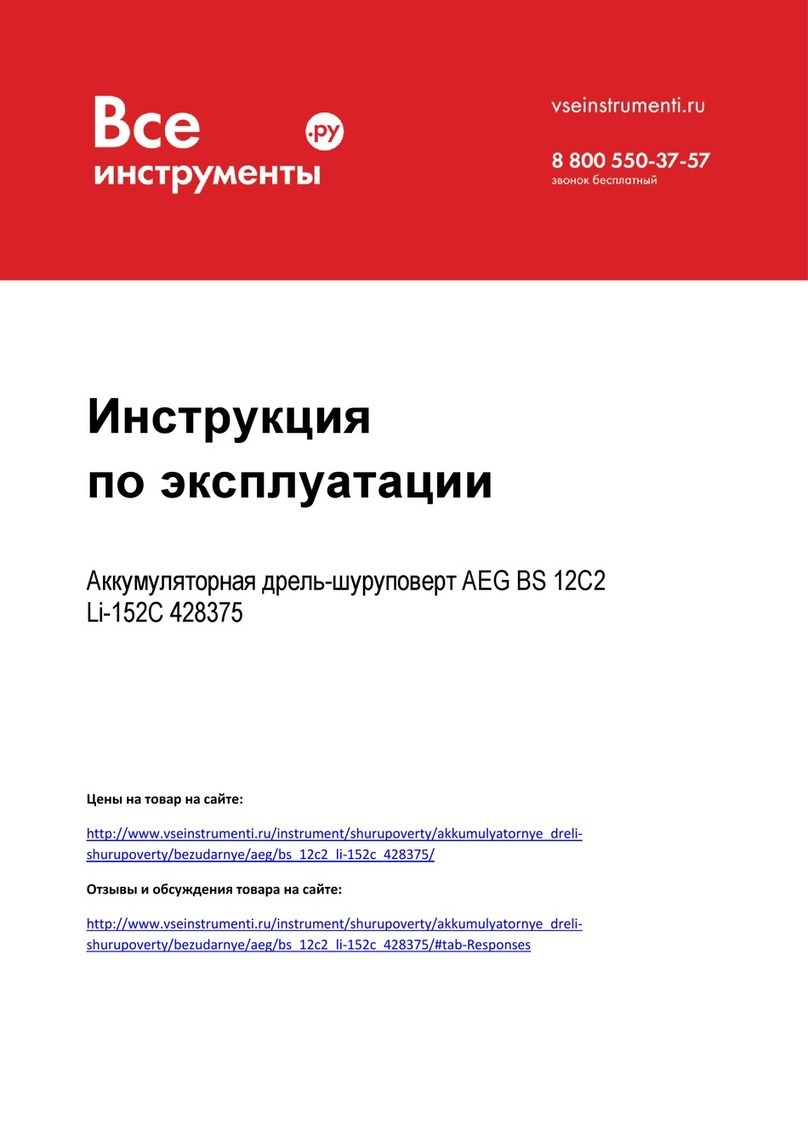1
ENGLISH SB2E 850 RS, SB2E 1010 RS, SB2E 1200 RST
You are demanding and expect to purchase quality goods – quality offered by Atlas
Copco. We have built a durable and reliable electric power tool for you.
Please read the instructions for use before first operation so you can handle your
power tool effectively and safely. We are sure that buying an AEG Electric Power
Tool from Atlas Copco was the right choice!
SB2E 850 RS SB2E 1010 RS SB2E 1200 RST
Nominal power 850 W 1010 W 1200 W. . . . . . . . . . . . . . . . . . . . . . . . . . . . . .
No-load speed*
1st gear 0–1350 min-1 0–1450 min-1 0–1450 min-1
. . . . . . . . . . . . . . . . . . . . .
2nd gear 0–3200 min-1 0–3400 min-1 0–3400 min-1
. . . . . . . . . . . . . . . . . . . . .
Speed under load max.*
1st gear 800 min-1 980 min-1 1150 min-1
. . . . . . . . . . . . . . . . . . . . . . . . . . . . .
2nd gear 2000 min-1 2300 min-1 2700 min-1
. . . . . . . . . . . . . . . . . . . . . . . . . . .
Percussion rate 51200 min-1 54400 min-1 54400 min-1
. . . . . . . . . . . . . . . . . . .
Drilling capacity in
Concrete 20 mm 20 mm 22 mm. . . . . . . . . . . . . . . . . . . . . . . . . . . . . . . . . . . .
Brick and tile 24 mm 24 mm 24 mm. . . . . . . . . . . . . . . . . . . . . . . . . . . . . . . .
Steel 13 mm 16 mm 16 mm. . . . . . . . . . . . . . . . . . . . . . . . . . . . . . . . . . . . . . .
Wood 40 mm 40 mm 45 mm. . . . . . . . . . . . . . . . . . . . . . . . . . . . . . . . . . . . . .
Drill opening range 1,5-13 mm 1,5-13 mm 1,5-13 mm. . . . . . . . . . . . . . . . . .
Drive shank 1/2”x20 1/2”x20 1/2”x20. . . . . . . . . . . . . . . . . . . . . . . . . . . . . .
Chuck neck diameter 43 mm 43 mm 43 mm. . . . . . . . . . . . . . . . . . . . . . . . . .
Weight 2,5 kg 2,5 kg 2,6 kg. . . . . . . . . . . . . . . . . . . . . . . . . . . . . . . . . . . . . . . . .
*In left-hand rotation the maximum speed of rotation is reduced by approx. 50%
(only applicable for SB2E 1200 RST)
Please pay attention to the safety instructions in the attached leaflet!
Dust that arises when working on material containing asbestos or stonework
containing crystalline silicic acid is harmful to the health. Please follow accident
prevention regulations.
Appliances used at many different locations including open air must be connected
via a current surge preventing switch.
Always wear goggles when using the machine. It is recommended to wear gloves,
sturdy non slipping shoes and apron.
Sawdust and splinters must not be removed while the machine is running.
Do not pierce the motor housing as this could damage the double insulation (use
adhesives).
Always disconnect the plug from the socket before carrying out any work on the
machine.
Only plug-in when machine is switched off.
Keep mains lead clear from working range of the machine. Always lead the cable
away behind you.
Always use the auxiliary handle, even if the machine has a safety clutch since this
safety clutch only engages when the machine blocks with a jerk.
Do not use diamond core drills on hammer mode.
When drilling in walls ceiling, or floor, take care to avoid electric cables and gas or
waterpipes.
Typically the A-weighted noise levels of the tool are:
Sound pressure level = 101 dB (A). Sound power level = 114 dB (A). Wear ear
protectors!
Typically the weighted acceleration is 7 m/s2.
Connect only to a single-phase AC current supply and only to the mains voltage
specified on the rating plate. Connection to sockets without earth protection is
possible as the appliance features protective insulation to DIN 57 740/ VDE 0740
and CEE 20. Radio suppression complies with the European standard EN 55014.
When fitting the plug, make sure that the brown (live) wire of this appliance is
connected to the plug terminal marked L or coloured red, and the blue (neutral) wire
of this appliance is connected to the plug terminal marked N or coloured black.
Under no circumstances must the wires of this appliance be connected to the earth
terminal of the plug marked either E, with the earth symbol or coloured green or
green/yellow.
The electronic drill/screwdriver can be universally used for drilling, percussion drilling,
screwdriving and cutting screw threads.
Do not use this product in another way as stated for normal use.
Introduction
Technical Data
Advice for your
safety
Measured sound
value
Measured
vibration value
Mains
connection
Use
